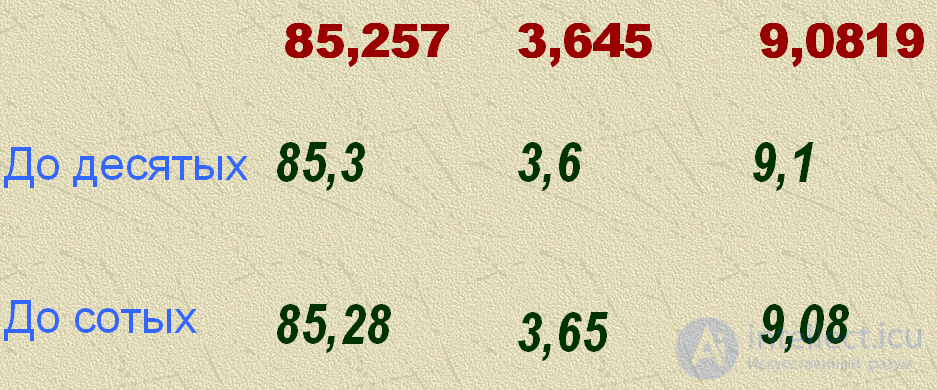Lecture
In the previous article, we discussed how to round a natural number. Now consider how to round the decimal .
Decimal fraction can be rounded up to the full, and to the discharges of the fractional part: tenths, hundredths, thousandths, etc.
It is important to remember and not to confuse the names of digits before and after the decimal point in decimal.

When rounding the fractional part of the decimal fraction, we use the rounding rules.
Round 41.958 to the hundredth.

Round 0.748 to the tenth.
Let us round the decimal fraction 14.89 to the discharge units in the whole part.

If, when rounding the decimal, the last of the remaining digits in the fractional part is 0, then this zero cannot be discarded. Since in this case, the given zero in the fractional part shows to which digit the number is rounded.
Example. Rounding 5.038 to the tenth.
One more example:

Please note that in the example, in the one-hundredth category, the number is 9, which when added 1, turns into 10. Therefore, instead of 9, we write zero, and to the category of tenths (we have 8), we add 1.
If the decimal fraction needs to be rounded up to a digit above the units (tens, hundreds, etc.), then the fractional part is discarded, and the whole part is rounded according to the rules for rounding natural numbers .
Example. Let us round 837.89 to dozens.
83 | 7.89 ≈ 840
More examples

Comments
To leave a comment
Arithmetic
Terms: Arithmetic